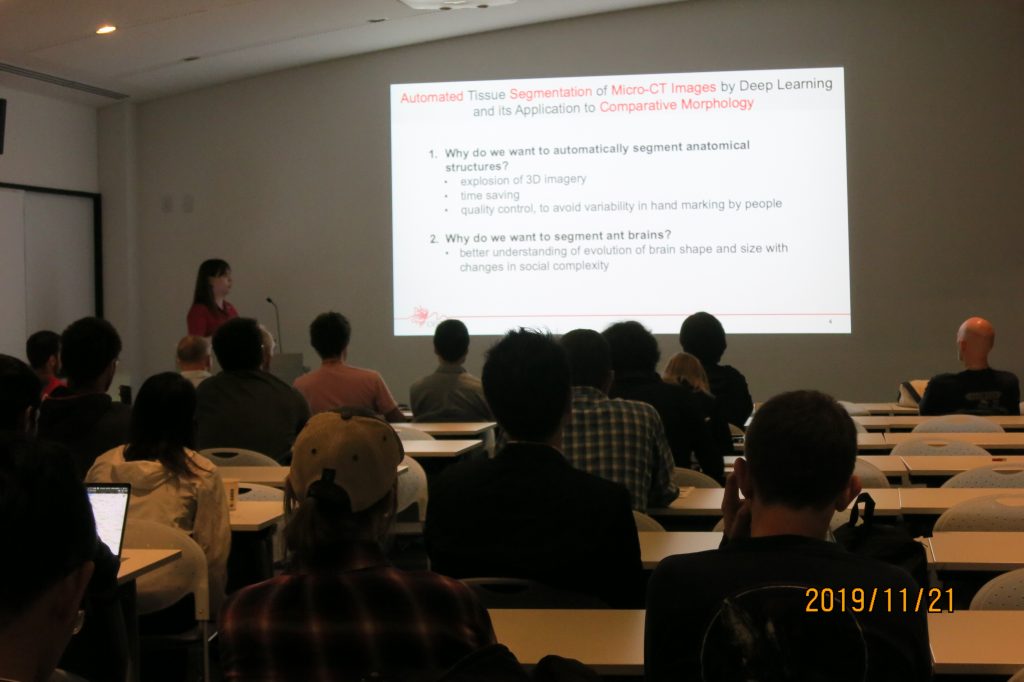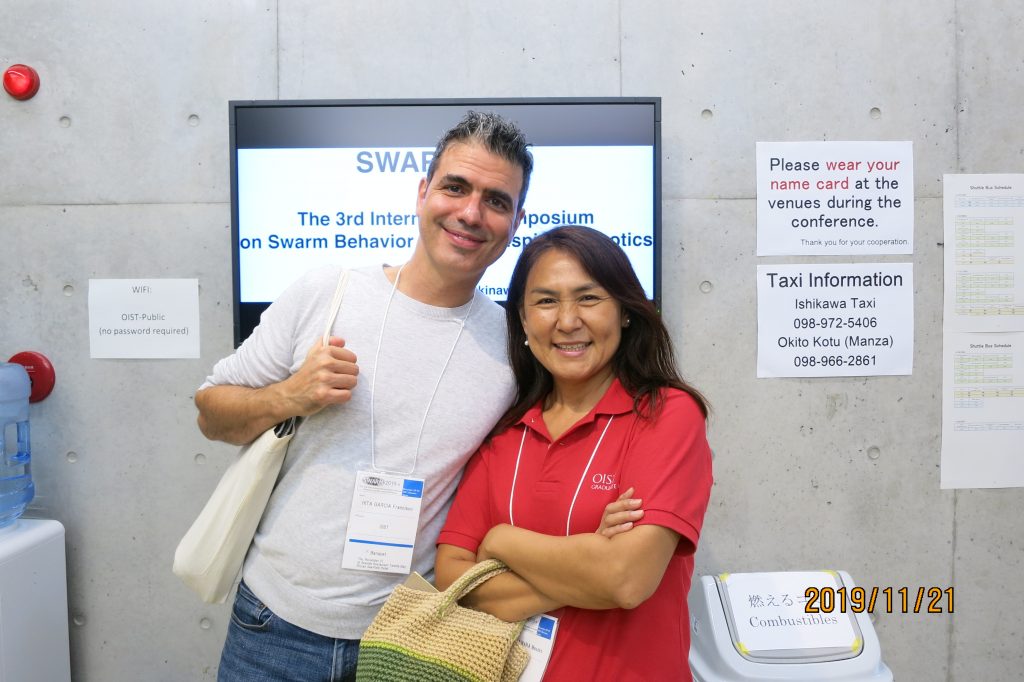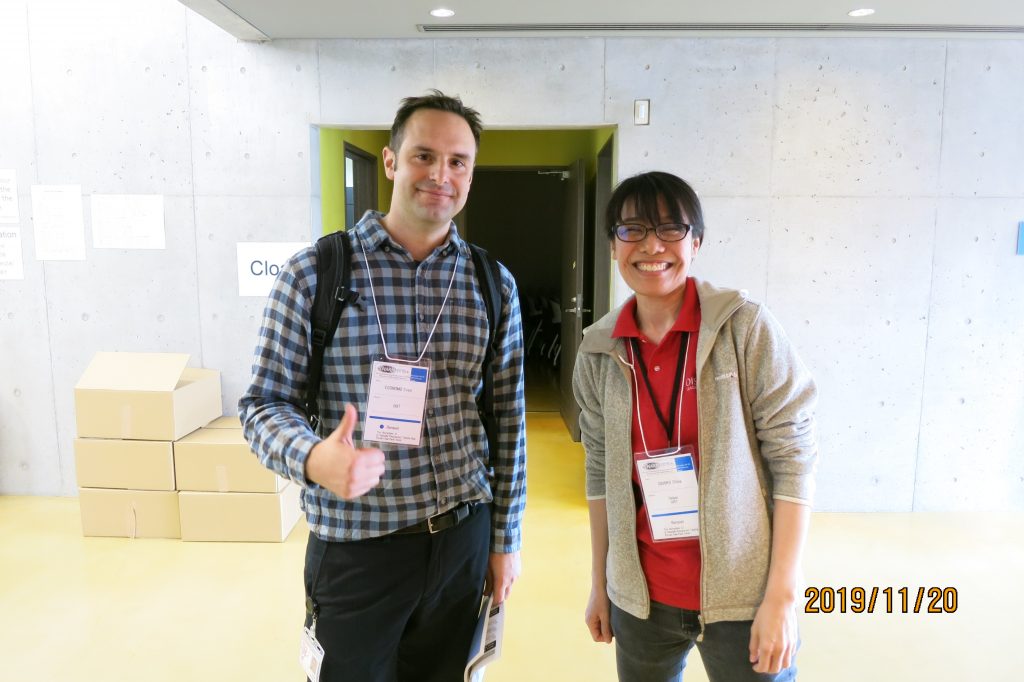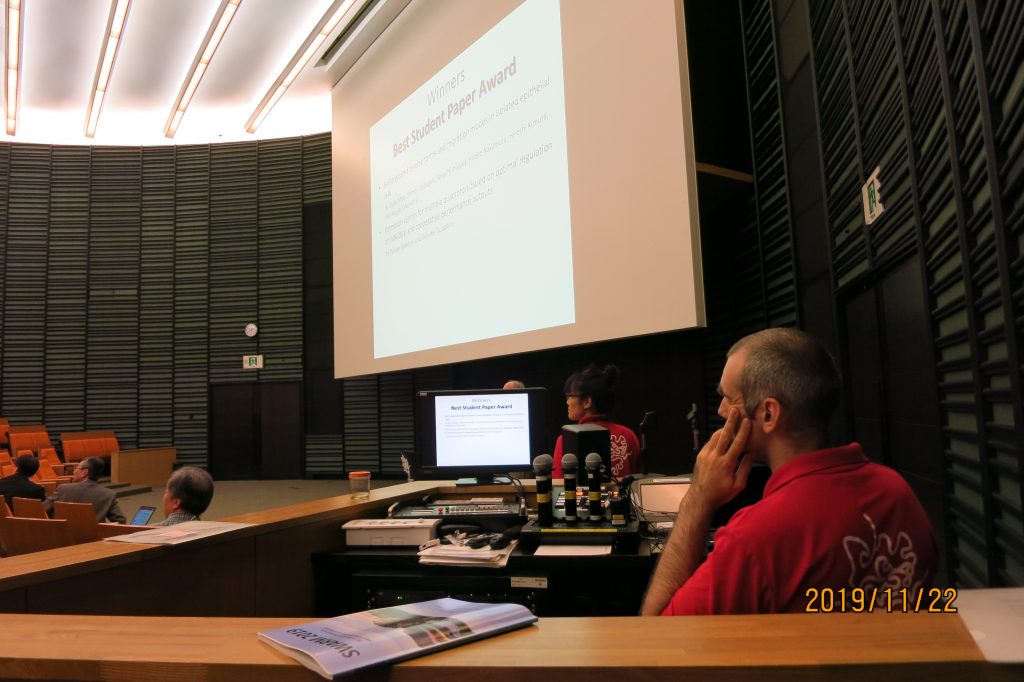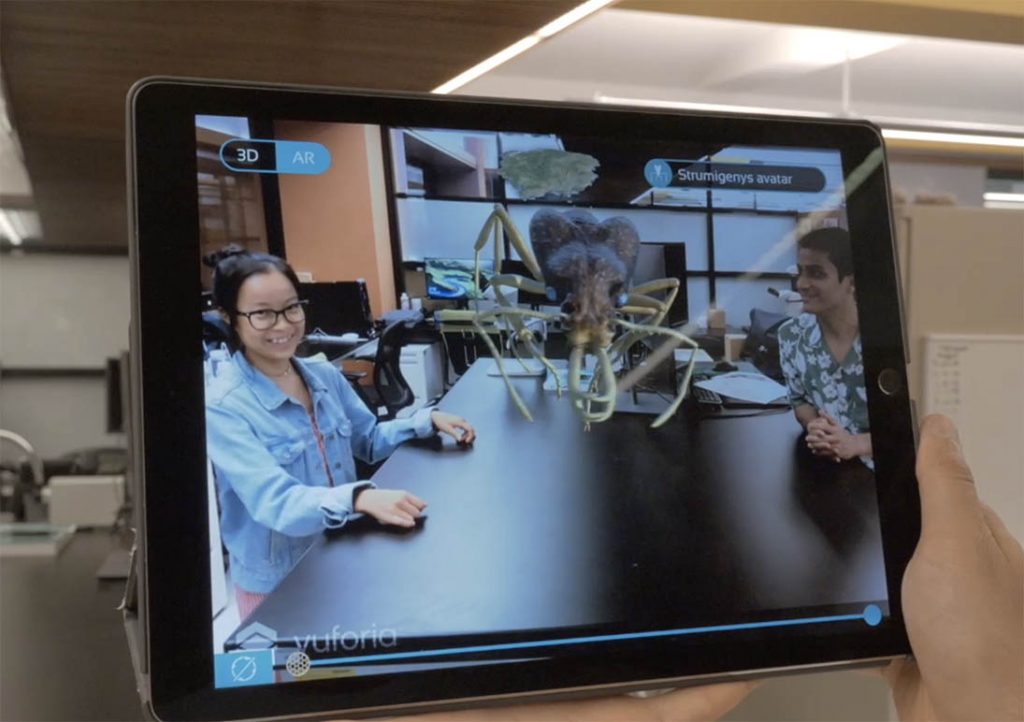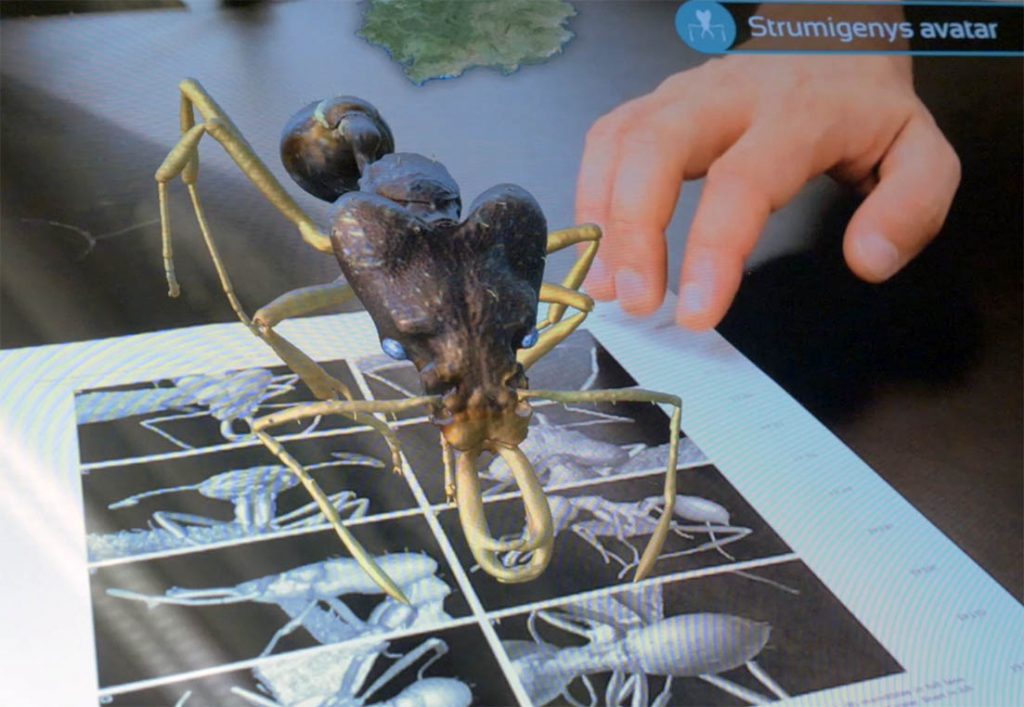This year, our lab co-organised and hosted SWARM 2019: The 3rd International Symposium on Swarm Behavior and Bio-Inspired Robotics, bringing together 160 biologists and engineers from around Japan and the world. The theme of this conference, which has been held in Kyoto twice before, is to promote interdisciplinary interaction between biology and engineers within the realms of collective behavior and bioinspired design.
We co-organized (with Christian Peeters) a symposium within the conference, “Engineering Insect Morphology by Natural Selection” to highlight recent research from understanding how insects work to inspire robotics. From our lab, Evropi Toulkeridou presented her research on the automated segmentation of micro-CT images by deep learning. In the same session, Adam Khalife, a former intern (now a PhD student at IEES-Paris), talked about his work on the muscular and skeletal structure of worker ants.
Other talks included Christian Peeters (ant thorax), from Yuko Ulrich (collective behavior) and Adria Labeouf (social circulation), and Hitoshi Aonuma (trap jaw ant mechanics). Evan wrapped up the session by asking how the endless engineering solutions of nature, currently locked up in museum collections, can be utilised to its maximum potential to inspire human innovation.
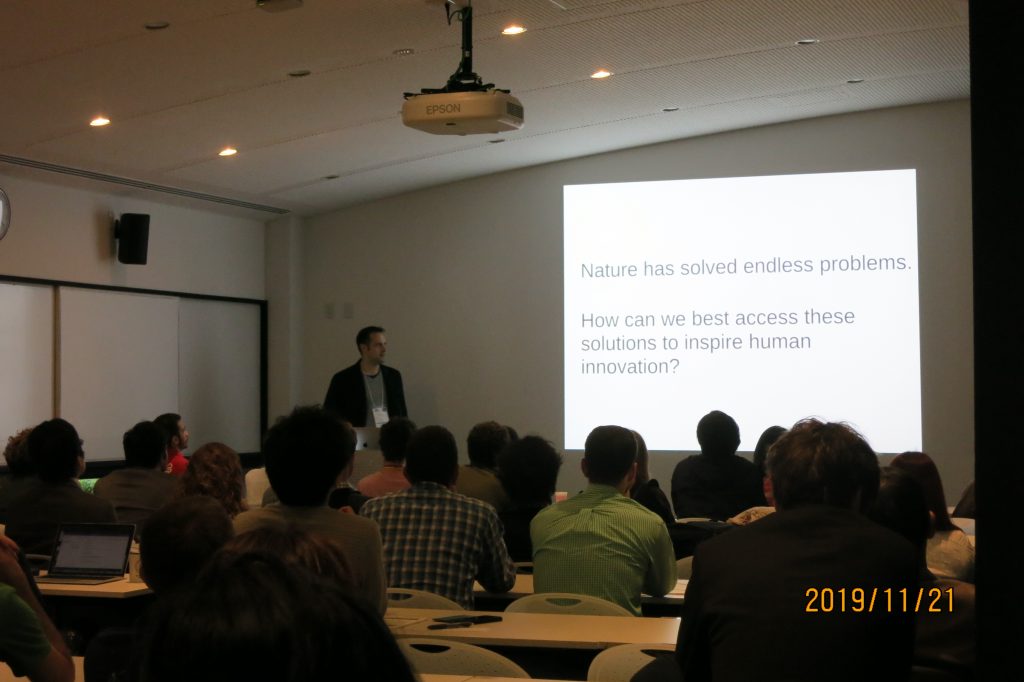
We hope that the symposium provided a fertile ground for biologists and engineers to exchange ideas and develop collaborations.
Thank you and otsukaresama to all the volunteers and especially to Chisa for her hard work organising the logistics!



